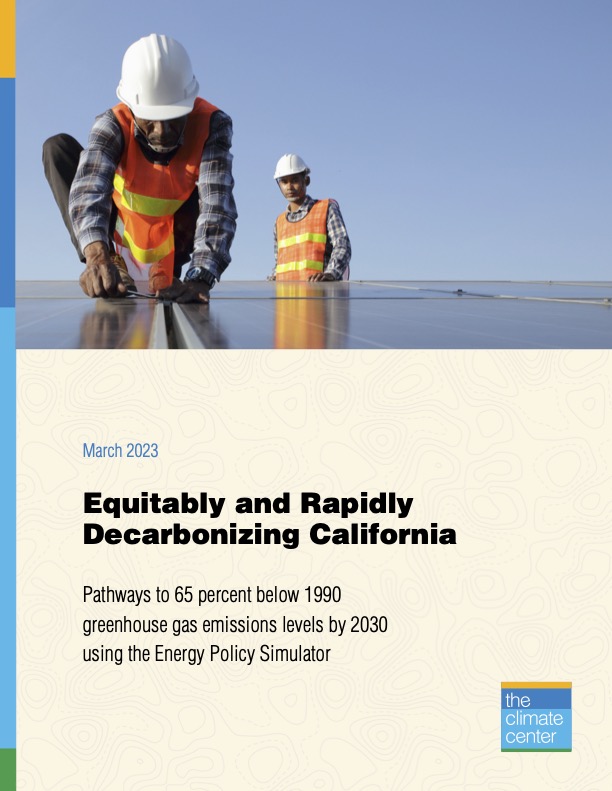This report presents an analysis and a proposal using Energy Innovation’s Energy Policy Simulator (EPS) model for attaining the urgently needed, ambitious, and achievable California greenhouse gas (GHG) emissions reduction target of 65 percent below 1990 levels by 2030. In addition, we make policy recommendations outside the scope of the EPS model to realize the 65 percent goal, including suggestions for monitoring our progress.
California’s current statutory goal to reduce emissions by 40 percent by 2030 puts us well behind many of our closest allies. For example, the European Union’s 2030 target is 62 percent, Denmark’s is 70 percent, and the United Kingdom’s is 68 percent.
With the state projecting $48 billion in climate investments over the next five years — as well as $374 billion in federal investments through the Inflation Reduction Act over the next decade — we have an opportunity to do much more, much faster.
Key recommendations:
The following are the four largest policy initiatives from the Energy Policy Simulator model showing how California could achieve a 65 percent reduction in climate pollution by 2030. The report also provides a sampling of current policies (not intended to be comprehensive) and some recommendations for policies California should consider adopting:
- Transportation: Adopt a 2030 target date to ban new gas car sales, moving up the deadline from 2035. California should also accelerate the timeline for requiring EV heavy freight trucks (drayage) sales only to 2032.
- Electricity supply: Establish a goal for 95 percent clean energy by 2030, fully employing distributed energy resources.
- Industry: Power all industrial processes by green hydrogen or 100 percent greenhouse gas-free electricity by 2030.
- Hydrogen: Using green hydrogen will help California decarbonize long-haul trucking, shipping, and air travel while also supplying another form of stationary, very long-duration — seasonal — energy storage. The Bipartisan Infrastructure Law provided a financial loan of $504 million in 2022 to develop a large-scale hydrogen storage facility using electrolysis. This and similar projects will lead to experience and learning, which are key to scaling up and lowering the costs of these technologies.
Benefits of accelerating climate action:
Our analysis shows that the 65 percent scenario has significant economic benefits for California. By 2030, more than 300,000 new jobs will be created relative to the Business As Usual scenario in the Energy Policy Simulator model, with GDP growth 1.79 percent higher. In addition, there are substantial, lifesaving health benefits resulting from not producing, refining, transporting, and using polluting fossil fuels. By 2030, 2,430 deaths will be avoided each year as a result of the cleaner environment, per the EPS model.

Jasmin Ansar
Senior Climate Researcher, The Climate Center
Ellie Cohen
Chief Executive Officer
